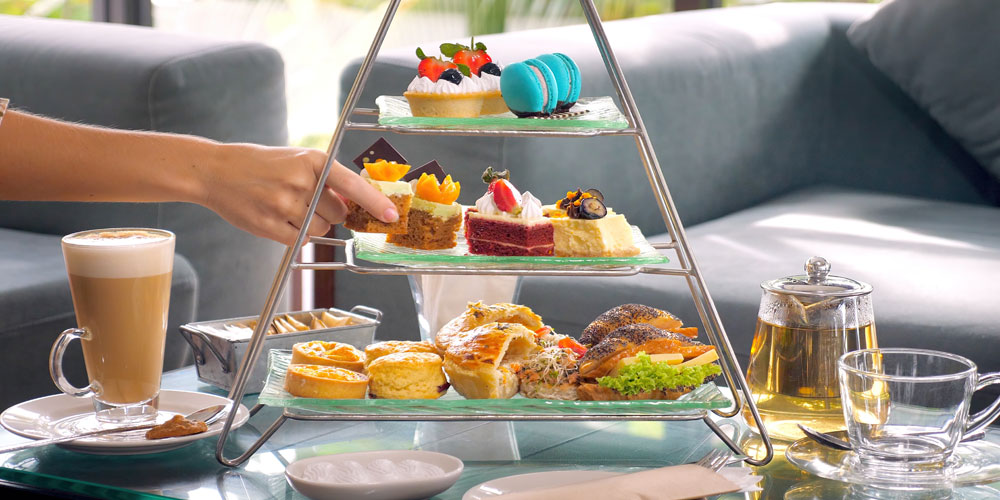The Art of Afternoon Tea: A Timeless British Ritual
There’s something charmingly British about the ritual of afternoon tea. Picture this: fragrant tea served in delicate China, warm scones topped with clotted cream and jam, elegant finger sandwiches, and dainty pastries, all enjoyed in a cozy café or a grand tearoom. It’s more than just a meal, it’s a gentle pause in the day, a moment of calm, and a celebration of tradition that’s still very much alive in modern Britain.
Whether you’re a local or a curious visitor, afternoon tea offers an inviting taste of British culture, blending etiquette, history, and culinary delight into one delightful experience.
A Brief History: From Duchess to Daily Delight
Afternoon tea dates back to the early 19th century and is credited to Anna, the Duchess of Bedford. During that time, dinner was typically served late in the evening, leaving a long stretch between lunch and the final meal of the day. To fill that gap, Anna began requesting a tray of tea, bread, and cake in her private quarters around 4 p.m.
What began as a private habit quickly turned into a fashionable social event. Anna began inviting friends to join her, and soon afternoon tea became a popular gathering among the upper class. It offered not only a light meal but a chance to socialize, show off fine china, and enjoy pleasant conversation.
As decades passed, this once-exclusive tradition became more accessible. Tearooms opened across Britain, offering the experience to the wider public. Afternoon tea transitioned from an aristocratic indulgence to a beloved national pastime, enjoyed in both grand hotels and quaint village cafés.
What’s on the Table: The Essentials of Afternoon Tea
A traditional British afternoon tea is a carefully curated collection of light bites and, of course, tea. The experience often starts with a choice of tea, commonly black teas like Earl Grey or Darjeeling, but many places also offer herbal or green options to suit modern tastes.
Next come the finger sandwiches. These are small, crustless sandwiches often filled with classic ingredients like cucumber and cream cheese, smoked salmon, egg and cress, or roast beef with horseradish. They’re delicate, simple, and perfectly portioned for leisurely nibbling.
Then we have the scones, which are arguably the heart of afternoon tea. Served warm, they’re accompanied by clotted cream and strawberry jam. Whether you spread the cream or jam first is a matter of hot debate (Cornish vs. Devon style), but there’s no wrong way to enjoy them.
Finally, a selection of pastries and cakes rounds off the experience. Think mini éclairs, fruit tarts, Victoria sponge, or macarons, just enough sweetness to complete the ritual.
Then and Now: The Evolving Tradition
While the core elements of afternoon tea remain unchanged, the tradition has evolved to fit contemporary lifestyles and dietary needs. Today, you can find vegan, gluten-free, and sugar-free options at many tea establishments across the UK and even internationally. Places like London’s luxury hotels and boutique cafés in San Francisco now offer their own takes on this classic ritual.
Afternoon tea is also more casual than it once was. While high-end venues may still encourage smart attire and reservations, many modern tearooms are relaxed and family-friendly. Some even offer themed teas, from literary-inspired menus to seasonal specials.
Despite its changes, afternoon tea remains a treasured way to slow down and savour life’s quieter moments, whether you’re catching up with friends, marking a special occasion, or simply treating yourself to a refined afternoon break.
FAQs: Everything You Wanted to Know About Afternoon Tea
What’s the difference between afternoon tea and high tea?
Afternoon tea is a light, mid-afternoon meal featuring tea, sandwiches, scones, and pastries, originally enjoyed by the upper class. High tea, on the other hand, is a heartier evening meal traditionally eaten by the working class. It often includes meat dishes, bread, and heavier fare alongside tea.
What should I wear to afternoon tea in the UK?
It depends on the venue. At upscale hotels or historic tearooms, smart casual or semi-formal attire is best. In more casual spots, neat and tidy clothing will do just fine. If you’re unsure, check the venue’s website for dress code details.
Is afternoon tea still popular today?
Absolutely. Afternoon tea remains a much-loved tradition in Britain and has even gained popularity in places like the United States and Asia. It’s a popular choice for birthdays, bridal showers, and casual catch-ups. And with modern twists, like champagne pairings and themed menus, it continues to delight new generations.
Can I enjoy afternoon tea with dietary restrictions?
Yes! Most reputable venues now offer alternatives for those with dietary restrictions, including gluten-free, vegan, and dairy-free options. Be sure to inform the staff in advance so they can prepare appropriately.
Where can I try authentic afternoon tea?
If you’re in the UK, places like The Ritz or Fortnum & Mason in London offer the quintessential experience. But you can also find charming independent tea rooms throughout the country, from Newcastle upon Tyne, across Yorkshire and Cornwall to name but a few. Abroad, many cosmopolitan cities have embraced the trend, offering high-quality versions with local flair.
Afternoon Tea: A Sip of British Elegance
Afternoon tea is more than a meal, it’s a pause, a pleasure, and a glimpse into British hospitality at its best. Whether you’re enjoying it in a grand London hotel, a cozy seaside café, or your own home, this timeless tradition invites you to slow down, sip thoughtfully, and savour every bite.
So next time you’re looking for something a little special, why not indulge in the art of afternoon tea? You might just find it’s the perfect blend of comfort, elegance, and good company.





